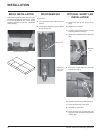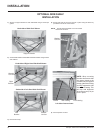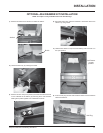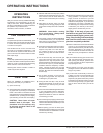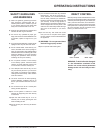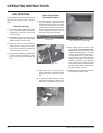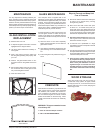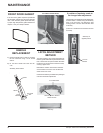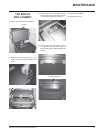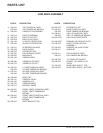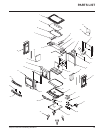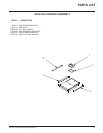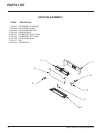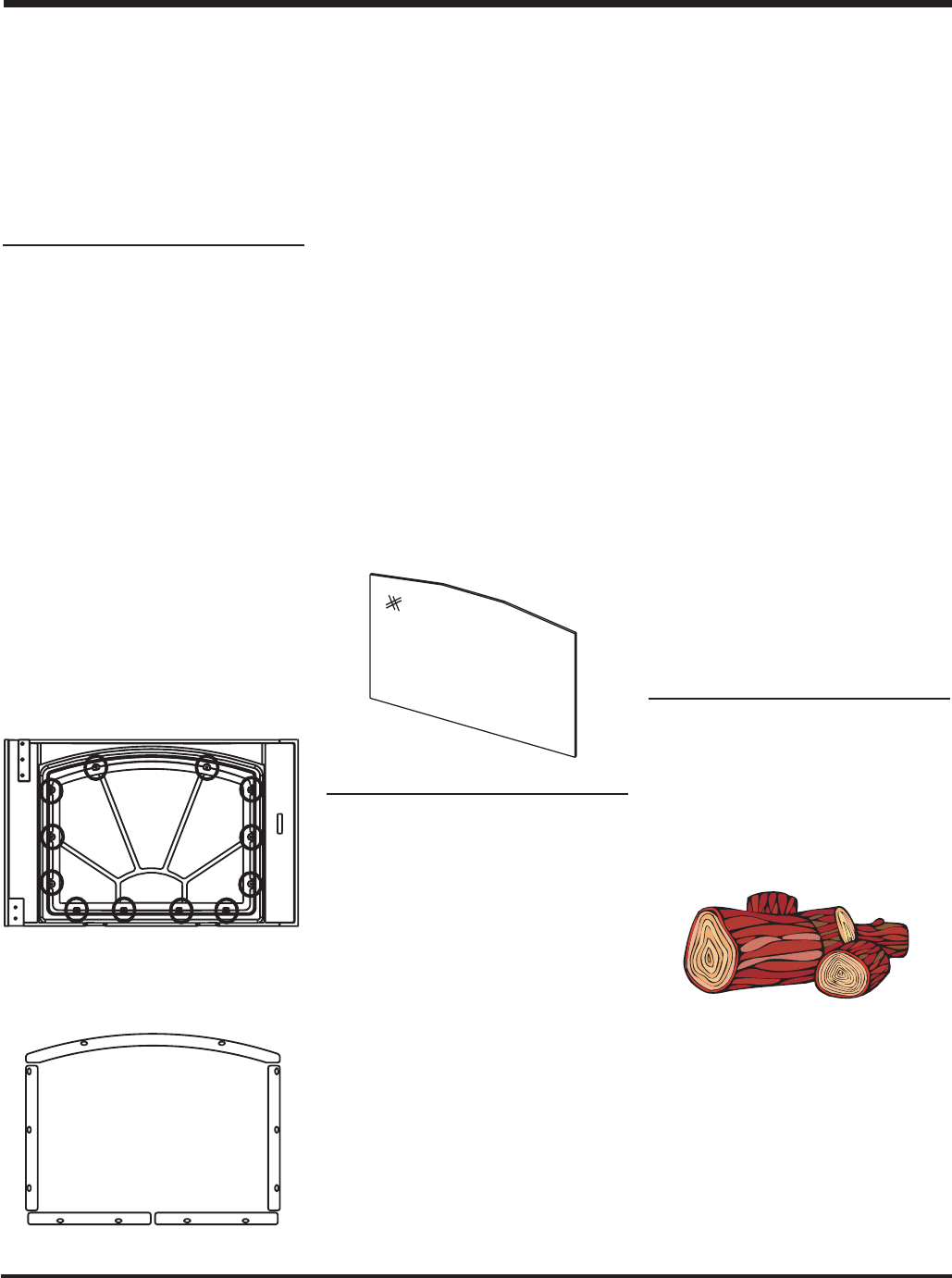
Hampton H200 Cast Freestanding Woodstove
25
GLASS INSTALLATION/
REPLACEMENT
1) Remove door from unit.
2) To replace the glass remove the 12 screws
highlighted in the diagram below.
3) Lift off the glass retainer and carefully re-
move glass.
4) Place new glass in the door, make sure
that the glass gasketing will properly seal
your unit.
5) Position the glass retainer back on. En-
sure that it rests on the gasket and not the
glass.
6) Secure glass retainer using the 12 screws.
Do not wrench down on the glass as this
may cause the glass to break.
7) Place door back on unit.
MAINTENANCE
It is very important to carefully maintain your
stove, including burning seasoned wood and
maintaining a clean stove and chimney system.
Have the chimney cleaned before the burning
season and as necessary during the season, as
creosote deposits may build up rapidly. Moving
parts of your stove require no lubrication.
MAINTENANCE
WOOD STORAGE
Store wood under cover, such as in a shed, or
covered with a tarp, plastic, tar paper, sheets
of scrap plywood, etc., as uncovered wood can
absorb water from rain or snow, delaying the
seasoning process.
Glass Retainer
Remove 12 screws.
CREOSOTE
When wood is burned slowly, it produces tar and
other organic vapours, which when combined
with moisture, form creosote. The creosote va-
pours condense in the relatively cool chimney
fl ue of a slow burning fi re. As a result, creosote
residue accumulates on the fl ue lining. When
ignited, this creosote can result in an extremely
hot fi re.
GLASS MAINTENANCE
Your Hampton stove is supplied with 5 mm
Neoceram ceramic glass (Part #940-345) that
will withstand the highest heat that your unit will
produce. In the event that you break your glass
by impact, purchase your replacement from an
authorized Hampton dealer only, and follow our
step-by-step Glass Installation/Replacement
instructions (refer to previous section).
It will be necessary to clean carbon and fl y ash
off of the glass at times. If carbon and fl y ash
remain on the glass for an extended period of
time, the glass could eventually become etched
and cloudy.
1) Allow the stove to cool down completely
before cleaning the glass, do not clean the
glass when it is hot.
2) Use cleaners specifi cally designed for this
glass cleaning. Do not use abrasive clean-
ers.
3) Ensure the glass is dry before burning your
stove.
1) Burn stove with the draft control wide open
for about 10-15 minutes every morning
during burning season.
2) Burn stove with draft control wide open
for about 10 - 15 minutes every time you
apply fresh wood. This allows the wood to
achieve the charcoal stage faster and burns
up any unburned gas vapours which might
otherwise be deposited within the system.
3) Only burn seasoned wood! Avoid burning
wet or green wood. Seasoned wood has
been dried at least one year.
4) A small hot fi re is preferable to a large
smouldering one that can deposit creosote
within the system.
5) The chimney and chimney connector should
be inspected at least once every two months
during the heating season to determine if a
creosote buildup has occurred.
6) Have chimney system and unit cleaned
by competent chimney sweeps twice a
year during the fi rst year of use and at
least once a year thereafter or when a
signifi cant layer of creosote has accu-
mulated (3mm/1/8" or more) it should be
removed to reduce the risk of a chimney
fi re.
WARNING: Things to remember in case
of a chimney fi re:
1. Close all draft and damper controls.
2. CALL THE FIRE DEPARTMENT.
Ways to Prevent and Keep Unit
Free of Creosote




